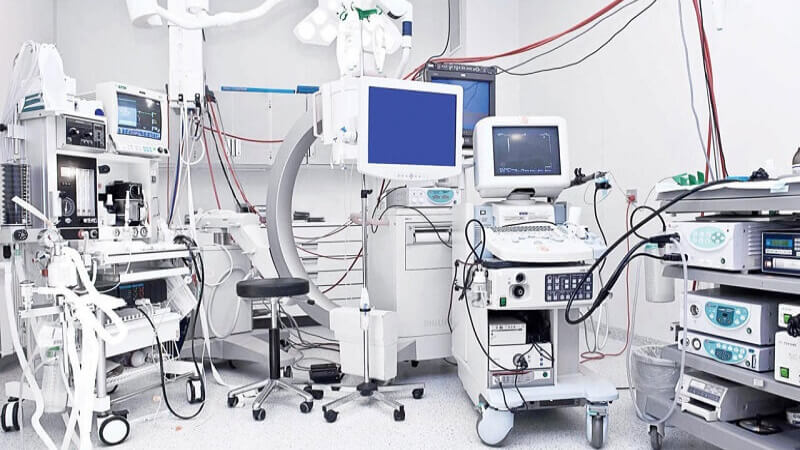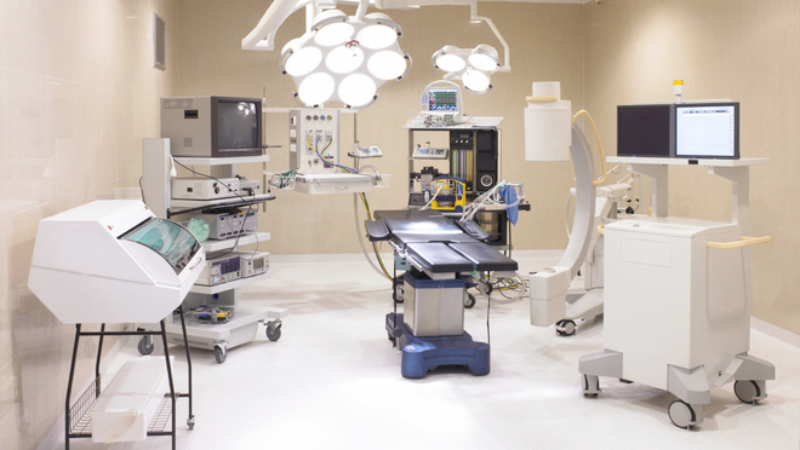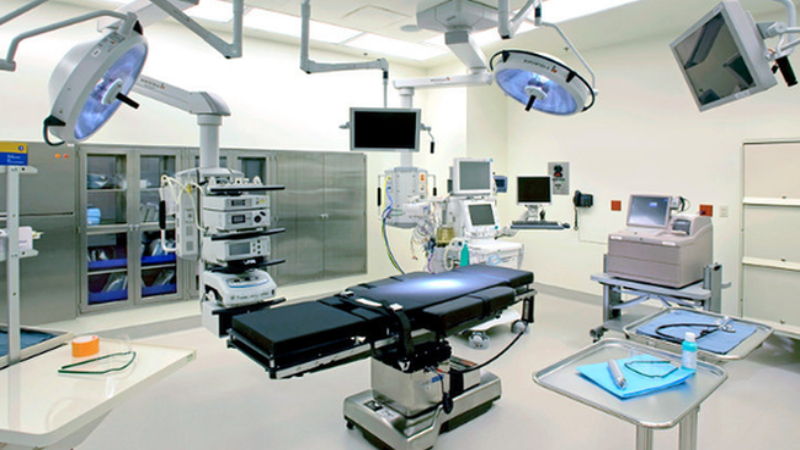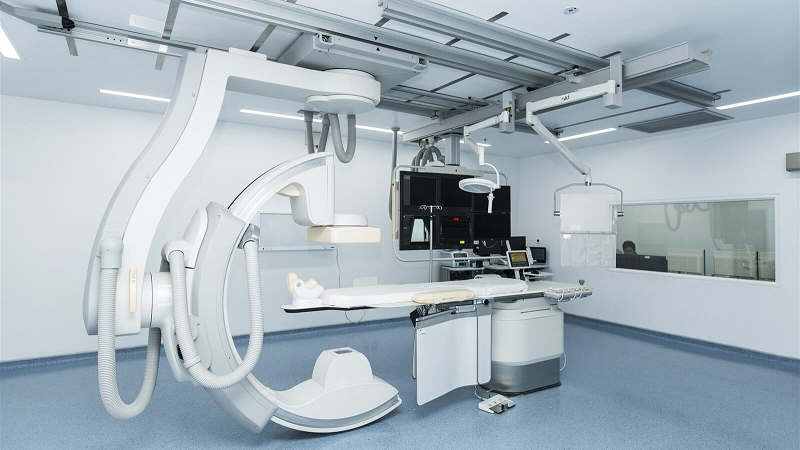Medical equipment imported from abroad is becoming increasingly common in Vietnam, but the import process can be complex and confusing. Let’s take a closer look at the latest detailed procedures for importing medical equipment.
1 What is Medical Equipment?
 Medical equipment is used individually or in combination, as directed by the owner.
Medical equipment is used individually or in combination, as directed by the owner.
According to Article 2 of Circular No. 30/2015/TT-BYT on regulations for the import of medical equipment, medical equipment refers to equipment, instruments, materials, in-vitro diagnostic reagents, and software that are used individually or in combination, as directed by the owner, to serve humans for one or more of the following purposes:
-
Diagnosis, prevention, monitoring, treatment, and alleviation of diseases or compensation for injuries.
-
Checking, replacing, adjusting, or supporting surgical and physiological processes.
-
Supporting or maintaining life.
-
Controlling conception.
-
Disinfecting medical equipment (excluding household and medical insecticides and disinfectants)
-
Used for medical devices.
-
Specialized transportation for medical activities.
2 Classification of Imported Medical Equipment
According to Article 4 of Decree 36/2016 and Circular No. 39/2016/TT-BYT, imported medical equipment is divided into 4 types, including 2 groups: Group A and Group B, C, and D.
The classification procedure for medical equipment will vary depending on the type. As of January 1, 2018, medical equipment of type A will require a Procedure for Declaration of Standards, while types B, C, and D will require a Procedure for Registration by the importer.
- Type A: Requires a Classification Document for Medical Equipment.
- Types B, C, and D: If the medical equipment falls under the category requiring permission according to Circular No. 30/2015, the importer must have an Import License and a Classification Document for Medical Equipment.
 Imported medical equipment is divided into 2 groups.
Imported medical equipment is divided into 2 groups.
Procedure for Classification of Medical Equipment
Step 1: Prepare the documents
The dossier for the classification procedure of medical equipment must include:
- Document requesting the issuance of a classification document for medical equipment.
- Technical documents (Catalogue) describing the functions and technical specifications of the medical equipment.
- User manual for the medical equipment.
- Standard document applied by the manufacturer of the medical equipment (ISO 13485 or 9001) that is still valid.
- Certificate of Quality Management System that is still valid.
- Classification and Free Circulation Certificate; Certificate of Conformity (if any) that is still valid.
Step 2: Submit the documents
The dossier must be submitted to the Institute of Equipment and Works for the Health Sector.
Step 3: Examination of the dossier
After submission, the dossier will be examined, and feedback will be provided. Any errors or omissions will be communicated for correction and supplementation.
Step 4: Receive the results
The classification results will be provided after the examination of the dossier.
Note: For imported goods, the importer needs to register for circulation.
3 Conditions for Importing Medical Equipment and Import Taxes
To import medical equipment, the following conditions must be met:
Medical Equipment Must Be 100% New
According to Decree No. 69/2018/ND-CP, used medical equipment is included in the “List of Goods Prohibited from Export and Import.” Therefore, imported medical equipment must be 100% new.
 Imported medical equipment must be 100% new.
Imported medical equipment must be 100% new.
Conditions According to the Import License
According to Circular No. 30/2015/TT-BYT, medical equipment requires an import license if it falls under Appendix I “List of Medical Equipment Requiring Import License” and does not need a license if it is not on this list.
Conditions According to the Classification of Medical Equipment
Group A:
For Group A, enterprises need to have a dossier declaring the applicable standards of type A medical equipment, issued by the Department of Health, and a Classification Document for Medical Equipment.
Groups B, C, and D:
To be eligible for import, these groups require a Classification Document for Medical Equipment.
Import Taxes for Medical Equipment
To import medical equipment, the importer must pay import tax and value-added tax (VAT).
- Value-added tax (VAT) for medical equipment: 5% or 10%.
- Preferential import tax: depending on the HS code, it can range from 0% to 25%.
4 Procedure for Registration of Circulation of Medical Equipment
According to the regulations in Chapter IV from Article 17 of Decree No. 36/2016/ND-CP, foreign medical equipment that does not have a circulation number in Vietnam must undergo a registration procedure to be imported and circulated.
To carry out the procedure, the importer must provide a complete dossier as listed below and submit it to the Ministry of Health:
- Document requesting the issuance of a new circulation number.
- Classification Document for Medical Equipment.
- Certificate of Quality Management System.
- Authorization letter from the owner of the medical equipment to the implementing agency for registration.
- Warranty eligibility certificate issued by the owner of the medical equipment.
- Free Circulation Certificate.
- Technical summary document of the medical equipment in Vietnamese.
- Technical documents (Catalogue) describing the functions and technical specifications of the medical equipment.
- User manual for the medical equipment.
- Label samples to be used when circulating the medical equipment in Vietnam.
Note: If registering for circulation of medical equipment with corresponding national technical regulations, a Certificate of Conformity must be added.
 To carry out the registration procedure for medical equipment, the importer must provide a complete dossier.
To carry out the registration procedure for medical equipment, the importer must provide a complete dossier.
5 Procedure for Obtaining an Import License for Medical Equipment
To obtain an import license for medical equipment, the following procedures must be completed.
List of Medical Equipment Requiring Import Licenses
According to Circular No. 30/2015/TT-BYT, the list of medical equipment requiring import licenses includes 49 types divided into 2 separate groups:
- Diagnostic equipment: X-ray machines, ultrasound machines, heart rate monitors, etc.
- Treatment equipment: surgical knives, anesthesia machines, blood filters, etc.
Authority for Issuing Import Licenses for Medical Equipment
The Minister of Health has the authority to decide on the issuance, extension, adjustment, re-issuance, and revocation of import licenses for medical equipment. The Minister may also authorize the Vice Minister or the Head of the Department to sign the license decisions.
Dossier for Applying for an Import License for Medical Equipment
For a new import license application, the following documents are required:
- Document requesting the issuance of a new import license (using the prescribed form).
- Free Circulation Certificate that is still valid.
- Valid ISO certificate of the manufacturer.
- Authorization letter from the owner of the medical equipment to the importer (using the prescribed form).
- Technical documents describing the type of imported medical equipment in Vietnamese (using the prescribed form).
- Technical documents (Catalogue) describing the functions and technical specifications of the type of medical equipment.
- Clinical evaluation documents and user manuals for the medical equipment, provided by the owner or manufacturer.
Note: If the import license has expired and has not been extended, a report on the results of importing medical equipment (using the prescribed form) is required.
For extensions, please refer to Articles 7, 8, and 9 of Circular No. 30/2015/TT-BYT for detailed information on extensions, adjustments, and re-issuance of import licenses.
 The issuance of import licenses for medical equipment is decided by the Minister of Health.
The issuance of import licenses for medical equipment is decided by the Minister of Health.
Procedure for Issuing Import Licenses for Medical Equipment
The following steps outline the procedure for issuing import licenses for medical equipment:
Step 1: Submit the dossier.
The application dossier is submitted to the Department of Equipment and Works for the Health Sector of the Ministry of Health.
Step 2: Wait for feedback from the Department of Equipment and Works.
After submitting the dossier, the Department will examine it and provide feedback to the applicant.
Step 3: Supplement and correct the dossier.
If there are any errors or omissions, the applicant must supplement and correct the dossier.
Step 4: Issuance of the license.
If the dossier is valid, the license will be granted to the enterprise. Otherwise, a written refusal will be issued, stating the reasons.
For detailed information on each step, please refer to Article 41 of Decree No. 36/2016/ND-CP and Article 12 of Circular No. 30/2015/TT-BYT.
Note:
- From July 1, 2017 onwards, when importing medical equipment, enterprises must have the results of the classification of medical equipment issued by a competent authority according to Official Dispatches No. 5464/BYT-TB-CT and No. 3593/BYT-TB-CT on the management of medical equipment.
- For Group A medical equipment, the import license will be replaced by the Procedure for Declaration of Standards, and for Groups B, C, and D, it will be replaced by the Procedure for Registration, effective from January 1, 2018.
- You can use the National Single Window to look up import licenses issued by the Ministry of Health.
6 Steps for Importing Medical Equipment


































